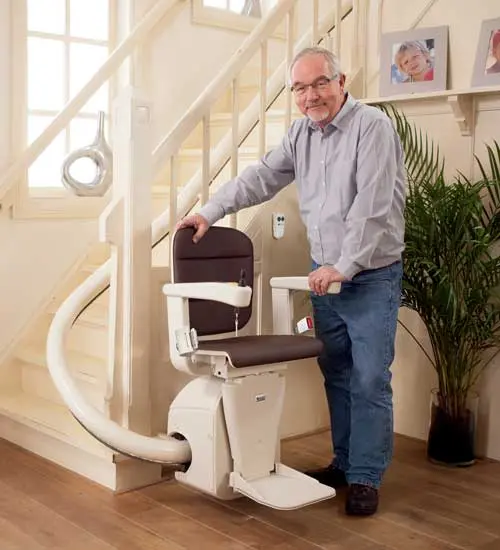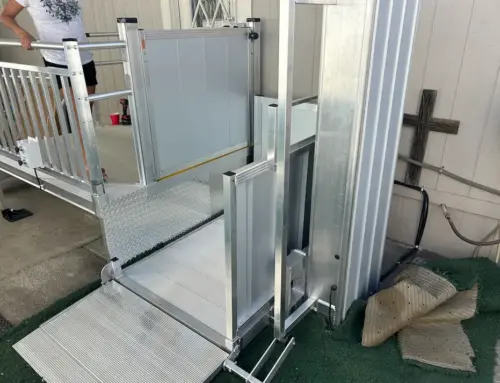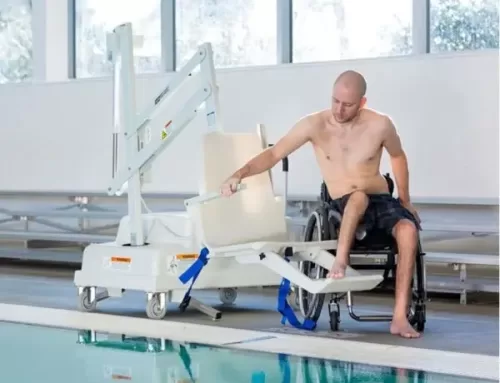Dealing with the aftermath of a stroke can pose daily challenges, making even the simplest tasks a bit tricky. That’s where assistive technology devices come as a great help. These incredible tools are designed to address the struggles of a stroke survivor. It enhances the general quality of life and helps them drive, walk, and express themselves properly.
In this article, we’ll look at some of the best assistive devices for stroke patients. Learn how these devices are the ultimate aids, providing assistance, freedom, and a great deal of empowerment in stroke patient’s daily life.
What Are Assistive Devices?
Assistive devices are also known as assistive technology. They allow individuals with disabilities to function efficiently. Any such equipment can also be used to make tasks easy to complete.
Stroke patients who face mobility challenges or have some sort of disability can find activities like walking, bathing, dressing up, eating or communication quite difficult. However, support devices can help stroke victims participate in normal activities and live comfortably and with more confidence.
There are common examples like canes, wheelchairs, shower chairs, hearing and vision aids, etc. Some more advanced types of assistive devices are stair lifts, bath transfer chairs, patient lift systems and more!
Essential Assistive Devices for Stroke Patients to Improve the Quality of Life
Patients may experience difficulty swallowing, moving, or speaking effectively. Excessive tiredness, mood swings, and memory problems are also common. That’s where assistive devices come in for help.
A reacher is essential for stroke survivors to hold objects effortlessly, grab bars for safety, a walking aid for balance, and adaptive utensils for eating.
-
Grab Bars
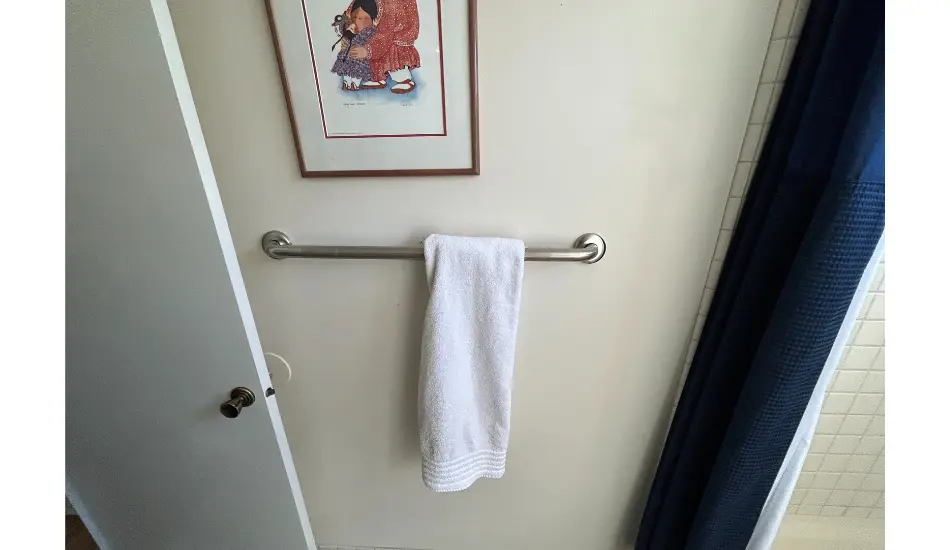
For stroke patients, maintaining independence becomes essential. But, certain tasks can become more complex and dangerous without proper safety measures. Falls are one of the prime reasons for injury among stroke patients, and they frequently occur in bathrooms.
It’s not surprising that the bathroom is one of the most dangerous rooms in a house. Fortunately, bathroom grab bars provide a simple solution for people with stroke. These simple bathroom additions offer stability and support when standing up from a seated position.
-
Shower Chairs
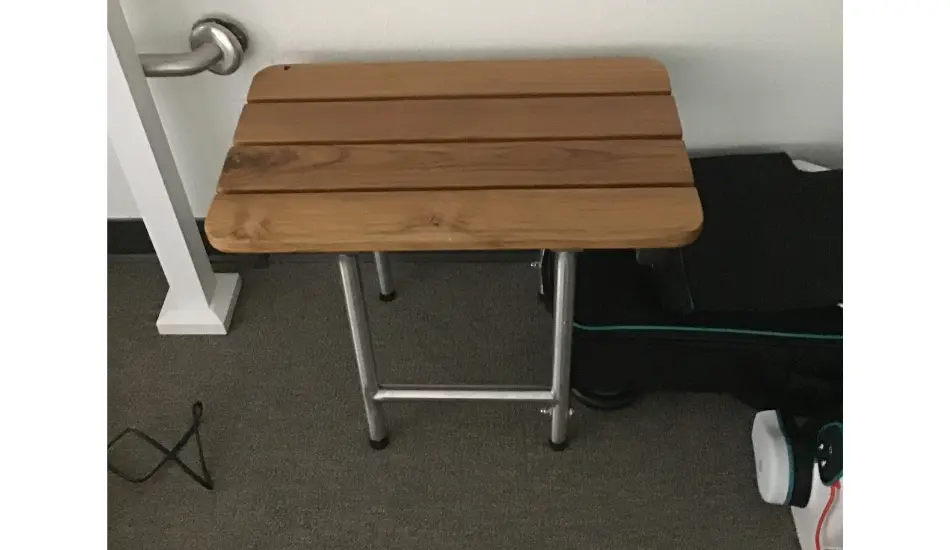
Shower chairs make it easy and safe for stroke patients to shower without the help of a carer or loved one. So they can regain their independence. Since they are seated, there is a low risk of slipping, and they can reach their body part without too much stretching.
Shower chairs can give ongoing comfort and stability to bathe with confidence because they’ll be able to quickly maintain their balance while seated. It secures a seat in the shower, so there is no pressure to hold up weight standing in the shower.
-
Bath Transfer Chairs
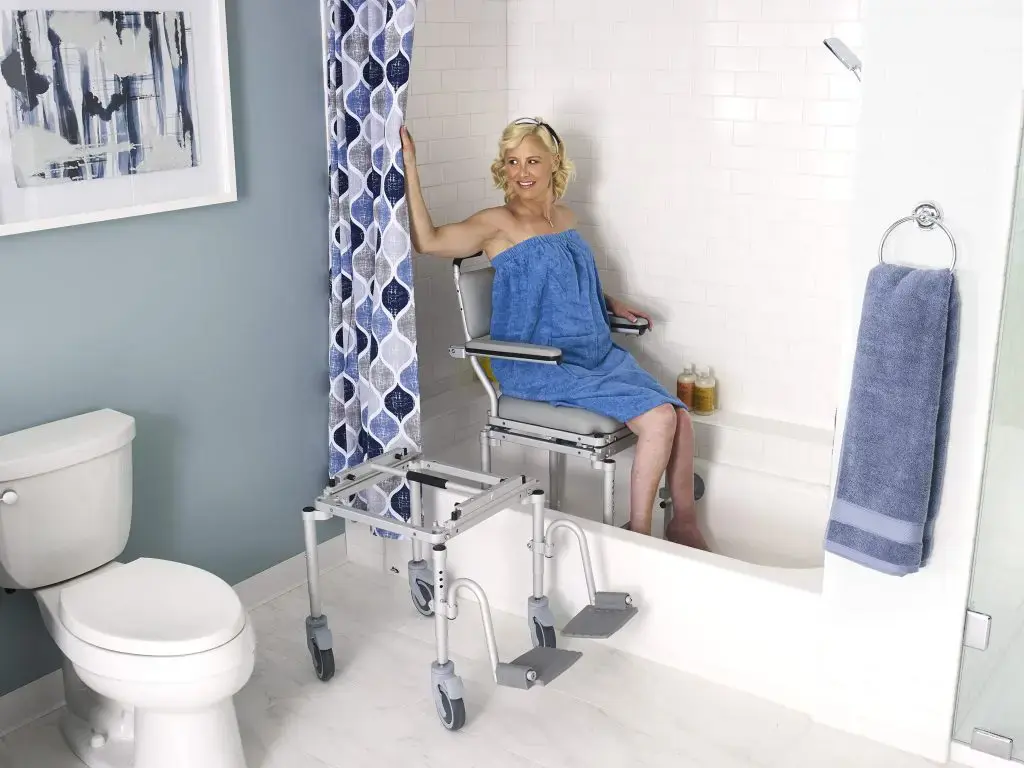
Stroke patients may find it simpler to enter and exit the bathtub with the help of a transfer bath chair. After sitting comfortably on the chair, they can extend their legs into the bathtub by lifting them over the edge.
This is typically easier for most individuals than getting up and raising their legs over the bathtub’s edge. Once more, they must have this device demonstrated to them by a therapist or nurse before using it with their family or on their own.
-
Roll-In Shower
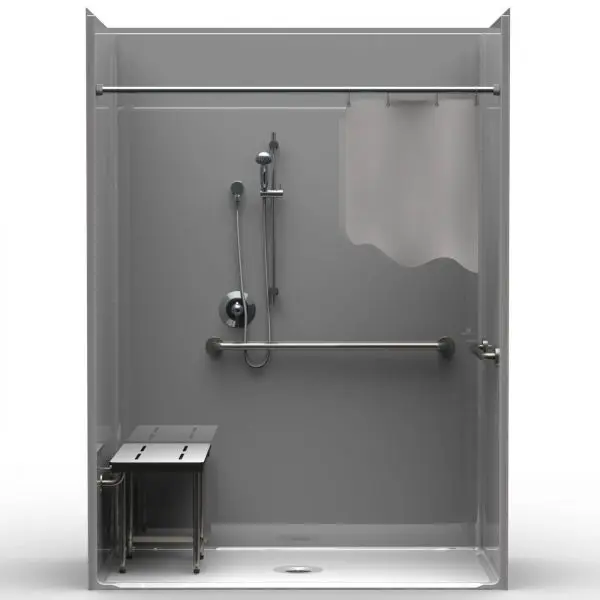
A roll-in shower install can be a way to keep someone safe and comfortable. Wheelchair accessibility is made safe and barrier-free with roll-in showers—two methods: A portable roll-in shower or a complete makeover. The nearest sink can be connected to a portable roll-in shower without any plumbing adjustments. It may also be far less expensive than a complete bathroom makeover.
People with mobility issues can enter and exit showers more comfortably and with less chance of losing their balance and falling by using a roll-in shower chair. The purpose of the chairs is to give them greater confidence and independence when taking a bath.
Because the materials used to make these rolling shower chairs are waterproof, they offer sufficient support for the duration of their bath. Furthermore, they require little upkeep and are simple to clean after usage.
-
Walk In Tub

Walking-in tubs are revolutionary for preserving freedom and finding convenience in daily duties. These tubs have several advantages, including easier entry for stroke patients and increased safety by frequently lowering trip and slip risks in conventional bathtubs.
Additionally, walk-in bathtubs include cozy seats, which lessen the possibility of tiredness that comes with standing up when bathing or taking a shower. Walking in the water improves blood circulation, which benefits those with rheumatoid arthritis or tense muscles.
-
Non Slip Coating
Non-slip shower coating is a crucial safety precaution to avoid falls and slips. It decreases falls, which are particularly dangerous for people with strokes. Ensuring optimal protection against slips in all damp areas within their home is of utmost importance.
The non-slip coating offers outstanding traction, increasing grip even on damp surfaces to avert unintentional slips and falls. Furthermore, it creates a shield on any surface to protect it from water damage such as rust and corrosion.
How to Effectively Use Adaptive Equipment During Stroke Recovery
One-sided weakness affects an estimated 80% of stroke survivors. Between 20 and 50 percent of survivors also develop spasticity, or stiff muscles in the affected limb. The stroke survivor may also have impairments, including ataxia, impaired balance, or diminished feeling, depending on the affected area. These conditions can all impact limb usage and the capacity to take care of oneself.
Simple tasks, like putting on clothes or brushing hair, may now range from somewhat different to completely unachievable. This can be annoying and necessitates more support or care provider load because it involves helping with everyday living activities (ADLs). Getting adaptive equipment online at a lower cost than even a decade ago is one of the many great things about living in the electronic era. Altering an activity’s completion method or modification can also be beneficial. For assistance using adaptive equipment and adjusting an activity to promote independence and safety with all ADLs, consult a qualified occupational therapist.
FAQ
Where Can I Find Assistive Devices?
It is best to consult a health professional before buying an assistive device. They can help you determine the device’s condition and choose a suitable model. Most importantly, lowering the risk of injury. You can buy essential assistive devices like grab bars, shower chairs, bath transfer chairs etc.
You can check “Call Before You Fall” as they offer assistive devices in your area. They are a prominent company that sells a variety of assistive devices. Also, the Internet is an excellent resource for information.
Which Assistive Devices Can Help with Going Back to Work?
Numerous assistive technologies are available to support you, depending on the kind of task you wish to undertake. Restarting work with assistive technology like grab bars, non-slip coating, walk-in tubs etc. can be useful. Your medical professional can evaluate your needs and aid you in selecting the appropriate assistive technology.
Conclusion
Assistive devices for stroke patients are more than simply tools. They are the wings that enable stroke patients to soar higher. This article provides information about cool devices like grab bars, shower chairs, and bath transfer chairs that can keep sick people safe and independent. It also explored how things like non-slip coatings and walk-in tubs can make homes safer for stroke patients. No matter the challenges, there are tools and people ready to help. Additionally, Call Before You Fall can be their partner in supplying the means for a peaceful and safe future. So check it out if someone has loved ones who had a stroke and needs assistance.

